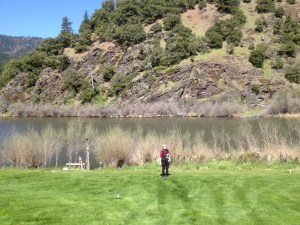Initially I decided to cut the warp sticks just to 1/8 inch
below the last row of weaving. Then do
the final clipping after shaping the cap. To shape the cap, I soaked it and filled a
zip-lock baggie with wet sand inside of the cap. I let it sit and dry for a couple days and then
cleaned the inside with small clippers and scraped it with a knife. I’m told in the old days they used a shell to
clean the inside of their baskets. Finally, I clipped the warp sticks right close
to the last row of weaving.
When I first cut the sticks to the 1/8 inch length, I was
totally surprised (and undone!) to find my cap was too small to fit on my head. All along I thought it was probably going to
be too big for me. But instead, I had
made a child’s cap?! I laughed, but felt
disappointed I’d never be able to put this cap on my head. I tried not to panic, but thought, OK, there
is still a lot of cleaning of the inside of the basket to be done which is
taking up space, plus the 1/8th inch of sticks which is not allowing
the cap to set down fully on my head. I
continued on with cleanup process, soaked the rim of the hat one last time and
then tried it on. Almost magically, and
to my great relief, the cap fits my head perfectly!
The pictures that follow show the completion process and my finished
cap.
Starting to clip...
The last 3 sticks to clip...
Oh My Gosh!! It's too small!
Cap needs to be shaped and clipped inside...
Shaping the cap with wet sand...
Tools I used to finish the inside...
It's done.
... and it fits.


























